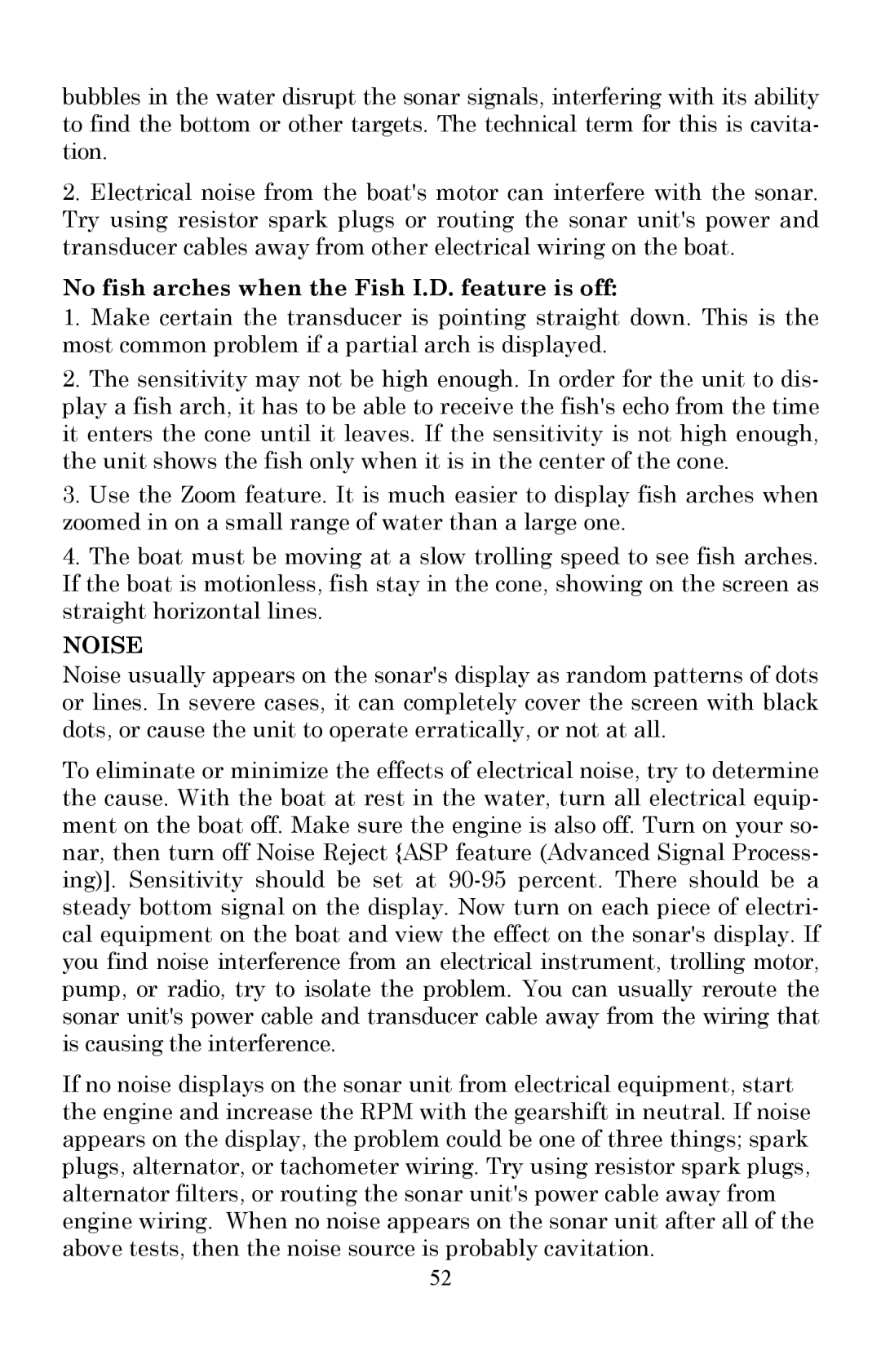bubbles in the water disrupt the sonar signals, interfering with its ability to find the bottom or other targets. The technical term for this is cavita- tion.
2.Electrical noise from the boat's motor can interfere with the sonar. Try using resistor spark plugs or routing the sonar unit's power and transducer cables away from other electrical wiring on the boat.
No fish arches when the Fish I.D. feature is off:
1.Make certain the transducer is pointing straight down. This is the most common problem if a partial arch is displayed.
2.The sensitivity may not be high enough. In order for the unit to dis- play a fish arch, it has to be able to receive the fish's echo from the time it enters the cone until it leaves. If the sensitivity is not high enough, the unit shows the fish only when it is in the center of the cone.
3.Use the Zoom feature. It is much easier to display fish arches when zoomed in on a small range of water than a large one.
4.The boat must be moving at a slow trolling speed to see fish arches. If the boat is motionless, fish stay in the cone, showing on the screen as straight horizontal lines.
NOISE
Noise usually appears on the sonar's display as random patterns of dots or lines. In severe cases, it can completely cover the screen with black dots, or cause the unit to operate erratically, or not at all.
To eliminate or minimize the effects of electrical noise, try to determine the cause. With the boat at rest in the water, turn all electrical equip- ment on the boat off. Make sure the engine is also off. Turn on your so- nar, then turn off Noise Reject {ASP feature (Advanced Signal Process- ing)]. Sensitivity should be set at
If no noise displays on the sonar unit from electrical equipment, start the engine and increase the RPM with the gearshift in neutral. If noise appears on the display, the problem could be one of three things; spark plugs, alternator, or tachometer wiring. Try using resistor spark plugs, alternator filters, or routing the sonar unit's power cable away from engine wiring. When no noise appears on the sonar unit after all of the above tests, then the noise source is probably cavitation.
52
